Forgotten Firearms of the 20th Century That Deserve a Second Look

The gun world is a fickle scene. Whether it’s sporting firearms for the public or military or police firearms for those in uniform, you see some guns that become eternal classics, like the AK-47, while others become lost in the dustbin of history, like the ones on the list below. Here are a few firearms that we think have gotten a dirty deal, and deserve a comeback at some level. This time around, we’re just looking at weapons primarily aimed at the military or police markets—we’ll revisit this topic in the future for the civilian market.
Guns of the past @ TFB:
Carl Gustaf m/45
Commonly known as the Swedish K, this might be the best of the submachine guns built around World War II. Officially, the Swedes were neutral in that conflict, and besides, this SMG actually came into service in 1945 as World War II was ending anyway. But when the Swedes made this weapon, they looked at what the British did with the Sten, what the Germans did with the MP40 and what the Russians did with the PPSh-41 and PPS-43—and, arguably, the Swedes took that info and one-upped them all with the m/45.
Chambered in 9x19mm, the Swedish K (as it became known around the rest of the world) was an auto-only weapon, with no semi-auto mode. No worry; Swedish soldiers found the gun very controllable with some practice, thanks to a low cyclic rate of around 550-600 rounds per minute.
While the Swedes only used the m/45 in peacekeeping missions such as tours in Gaza and the Congo, it served a very long time in that country’s military. Their militia retired it in 2007. A few other countries also adopted the weapon and retired it for the same reason; they’d moved to more modern carbines.
But while the Swedes mostly used this SMG for peacetime work, it saw plenty of hairy action in Vietnam, where special forces used it—in particular, the Navy SEALs. The Swedish K was robust, handling crud and dirty conditions with ease, and was supposedly easy to bring into action after being submerged, which is a rather important feature for an amphibious unit. The folding stock made it easier to carry in a helicopter as well. American armorers added such features as crude night sights and suppressors to some of these weapons, and it might have made an even more formidable reputation in ‘Nam if the Swedes hadn’t stopped selling them to America. The States built the Smith & Wesson M76 on a design supposedly inspired by the Swedish K. Various manufacturers built those weapons off-and-on in the US from the late ‘60s through the early 2000s, but they never had the same reputation as the original Carl Gustaf-built SMG.
Ljungman AG42
We might as well keep rolling with this Swedish theme. The Americans had the Garand during World War II and the Soviets had the SVT-40 and the Germans had the Gewehr 41 and Gewehr 43. The Swedish military saw what way the wind was blowing, and built their own semi-auto rifle, the Ljungman AG42b. With a direct impingement gas-operated action, the AG42 foreshadowed later rifles like the French Mas-49 and ultimately Eugene Stoner’s AR-10 and AR-15 actions.
Like the SVT-40, the AG42 had a tilting breech block and was fed from a 10-round box mag. The shooter was supposed to top off the box mag with five-round stripper clips, the same as used in Sweden’s M96 and M38 bolt-action rifles; it was chambered for the same 6.5x55 ball ammo as those rifles, and had a similar reputation for accuracy. And also like the SVT-40, the AG42 was supposed to only be reloaded by these stripper clips, not by swapping out a new box mag.
And, the AG42 had a feature in common with the Garand: A reputation for being an absolute mangler if you got your hand caught in the action during a reload.
As with the Carl Gustaf m/45, the AG42 did not see much wartime action with Sweden’s armed forces, especially as it was retired much earlier than the SMG - in the 1960s, Sweden went with Automatkarbin 4, a licensed copy of the H&K G3.
However, when they stopped building the AG42 for themselves, the Swedes sold the tooling to Egypt, which used it to build the Hakim rifle. This was basically the same gun but with an adjustable gas system and muzzle brake and chambered in 8mm Mauser. They also built the Rasheed carbine on the same action in 7.62x39. These rifles seem to have mostly been relegated to rear echelon duty during Egypt’s conflicts with Israel during the 1960s and 1970s, and total production appears to be under 90,000. Still, they’re around on the used market.
Vz.52/57
You have to love the Czechs’ plucky attitude towards their arms industry. Even when under the boot of Soviet communism, they managed to keep their gun factories running, building the Vz.58 as a middle finger to their overlords and rejecting the AK-47. And before that, they built the semi-auto Vz.52/57 series as a made-at-home carbine for their military.
The original Vz.52 was chambered in the rimless bottleneck 7.62x45mm cartridge, which was a Czechoslovakia-only round. The rifle had a short-stroke gas system and could maybe be seen as a sort of equivalent to the Russian SKS rifle, but with an oddball forward-tilting bolt. The gas system wrapped around the barrel in a design that could be very loosely described as a gas action built along the same lines as John Browning’s Remington 8 long-recoil action, but with a fixed-breech gas system instead of a spring-based system. Or maybe you could say it’s like a Remington 1100 action wrapped around a barrel, instead of the magazine tube.
Soviet leadership eventually forced the Czechoslovakians to make the Vz.52 in 7.62x39mm for ammo commonality, and these rifles were named the Vz.52/57 series. If you can get your hands on one of these, it’s much easier to shoot than the rifles chambered in 7.62x45mm.
While the Czechoslovakians converted their military to the Vz.58 at the late of the 1950s, they exported their previously-built Vz.52 and Vz.52/57 rifles to other Communist countries around the world, and they popped up in hot spots like Cuba and Angola (thanks to the Cubans messing around there) during the Cold War, and later during the GWOT.
Lanchester submachine gun
The Sten was the most famous British submachine gun in World War II, but they also had the Lanchester in their arsenals, mostly used by naval boarding parties and airfield security teams. And while the Sten was cheap, crude and ugly, the Lanchester was a well-made, well-liked gun, with a design that went all the way back to a German weapon from World War I. The Lanchester was an update of the MP28, itself an update of the MP18, the submachine gun that beat even the Thompson into frontline duty with its appearance on the Western Front in 1918.
British engineer George Herbert Lanchester, best known for his work in the automotive sector, refined the MP28 design into the SMG that bore his name. Built by the Sterling Armaments Company, these high-quality submachine guns (chambered in 9x19mm) served the British Empire’s military all around the world, but never gained the notoriety of the weapons used by the infantry.
Still, the Brits made a lot of these, with some figures ranging as high as 100,000 built. They were expensive to manufacture, with a wood stock (borrowed from the Lee-Enfield, along with the bayonet!), a solid brass magazine housing and a machined-from-steel receiver. But given their usage in roles where loss was unlikely and regular maintenance was going tobe required by airfield and ship armorers, they could afford to spend more money on an SMG that could be expected to see a lot of carrying in foul weather, therefore needing to resist rust—but probably not as much heavy action as an infantry weapon that might be built today, captured or lost tomorrow.
These SMGs were in lockers on British naval ships until the 1970s, and they’re still in use around the globe by paramilitaries, and possibly still even in the weapons lockers of some navies who bought ships from the Brits.
Calico M960
While all the other guns mentioned earlier did see official military usage, the Calico M960 did not, except for perhaps being issued to special forces—look around online, and you can find pictures of this weapon in use by SWAT-style police teams, at least. A select-fire carbine/SMG/SBR (depending on your perspective), the Calico M960’s main distinctive feature was a 50-round or 100-round helical magazine atop the action. Even with a 100-round mag on board, the M960 weighed only 8.05 lbs and made a very compact weapon with the extending stock collapsed. It was one of a series of similar weapons developed by Calico during the 1980s and 1990s, featuring in action-style pulp novels of that time. Alas, production was cut short when the 1994 Assault Weapons Ban made it difficult to impossible for most civilians to buy guns with a magazine capacity over 10 rounds. Obviously, the 100-round mags were out, and the M960 is still available on Calico’s website, but it lost momentum due to the AWB and hasn’t caught back on with the public yet.

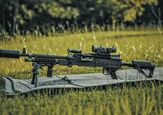
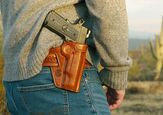
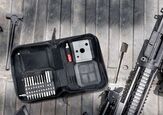














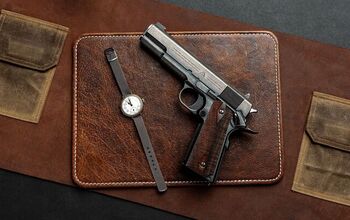
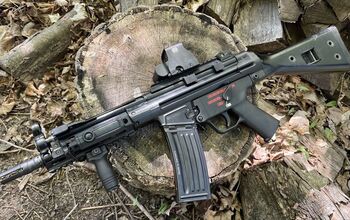

![[SHOT 2025] New Illumination And Suppression Options From Surefire](https://cdn-fastly.thefirearmblog.com/media/2025/01/31/00316/shot-2025-new-illumination-and-suppression-options-from-surefire.jpg?size=350x220)






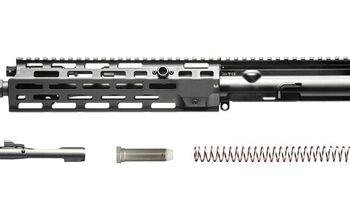

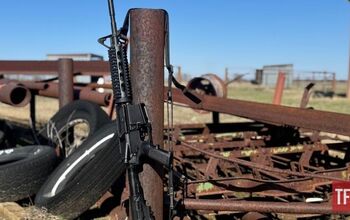

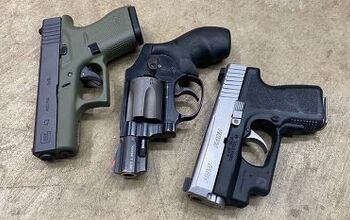

![[SHOT 2025] HK USA Displays MR A4 Family, New Pistols](https://cdn-fastly.thefirearmblog.com/media/2025/01/23/02571/shot-2025-hk-usa-displays-mr-a4-family-new-pistols.jpg?size=350x220)
Comments
Join the conversation
Well that was fun and you didn't try to squeeze every dime you could out of me like some other forgotten weapon sites
Calico was doing Kel-Tec work before Kel-Tec was working. Shame their guns are such jam-o-matics.